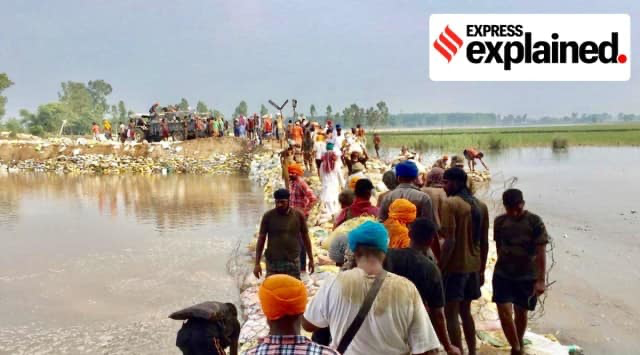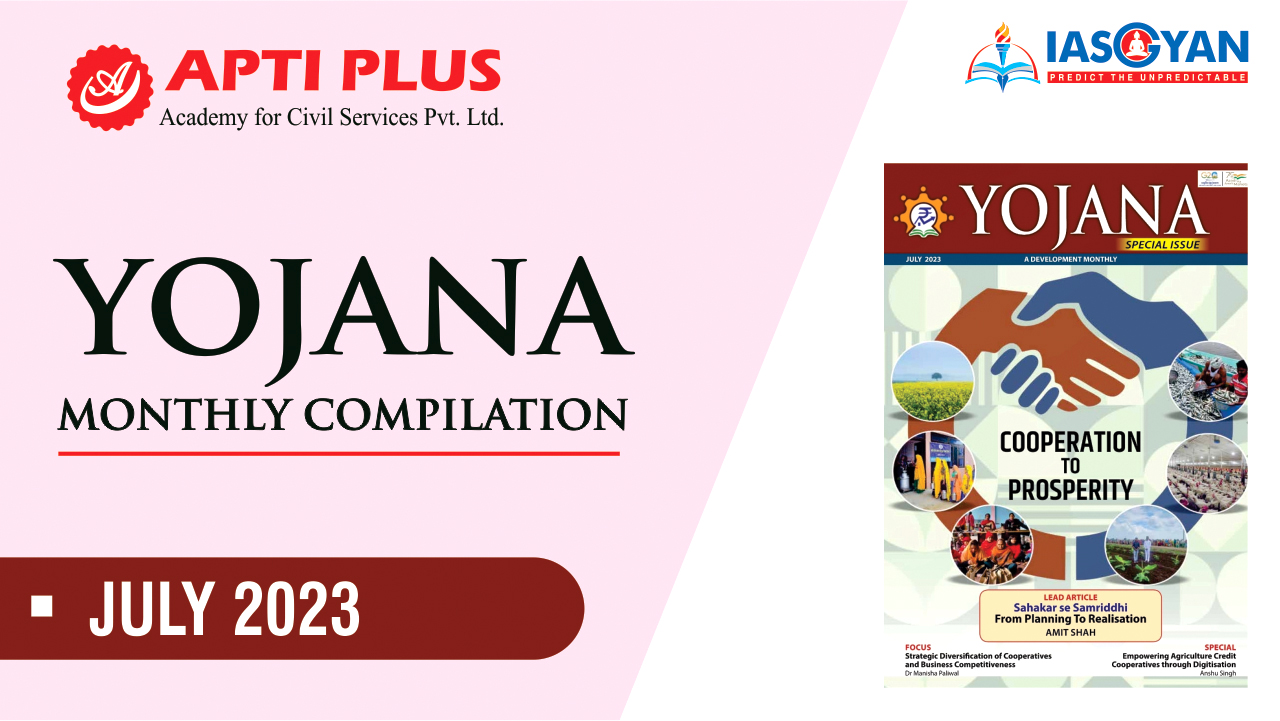Description

Disclaimer: Copyright infringement not intended.
Context
The issue of flooding in Punjab, India, focusing on recent instances of flooding, water sources in the region, the role of canalisation in flood management, and the current state of canalisation infrastructure.
Details
- Punjab has experienced two major instances of flooding in the past month.
- The first was due to intense rainfall across Punjab, Haryana, and Himachal Pradesh, leading to river influx.
- The second occurred due to heavy rainfall in Himachal Pradesh, resulting in dam releases downstream.
Water Sources in Punjab
- Perennial Rivers: Punjab is traversed by three perennial rivers: Sutlej, Beas, and Ravi.
- Rivulets: Two rivulets, Chitti (eastern) and Holy (western) Beins, contribute to the water network.
- Non-Perennial Rivers: Non-perennial monsoon rivers like Ghaggar and Chaki, along with 16 major seasonal streams, further contribute to the water system.
- Minor Seasonal Rivulets: Minor streams known as choes and khads add to water flow during the monsoon.
Risk of Flooding and Regulation
- Water sources originating from Himachal and Jammu & Kashmir bring substantial monsoon water to Punjab.
- Dams filled to capacity can lead to downstream flooding even without local rainfall.
- Effective regulation of rivers and water sources is needed.
- Canalisation involves diverting water flow through channels, mini dams, interconnections, and embankments.
Current State of Canalisation
- Significant dams like Bhakra Nangal, Pong Dam, and Ranjit Sagar exist on perennial rivers. Dhussi Bandhs (earthen embankments) are present along these rivers.
- These embankments are vulnerable to breaches with modest increases in river flows.
- Many local rivulets, drains, and Nullhas lack proper canalisation, increasing flood risks.
Role of Canalisation in Flood Prevention
- Recent floods resulted from overflowing main rivers and local waterways.
- July floods were due to heavy regional rainfall causing unregulated rivers and local waterways to overflow.
- August floods resulted from excessive rainfall in Himachal, filling Bhakra Nangal and Pong dams, necessitating heavy downstream releases.
- Canalisation would manage both local rain and dam releases. Long-term canalisation strategies and strengthening Dhussi Bandhs could mitigate flood risks.

About Canalisation of Rivers
- Canalisation is a water management technique that involves controlling and regulating the flow of water within rivers, streams, and other water bodies.
- This process aims to optimize water distribution, prevent flooding, improve navigation, and enhance overall water resource utilization.
Benefits of Canalisation
- One of the primary purposes of canalisation is to manage water flow during heavy rainfall or snowmelt periods. By directing excess water through controlled channels, flooding risks in downstream areas can be significantly reduced.
- Canalisation facilitates the navigation of boats, ships, and barges by creating consistent water depths and reducing obstacles such as sandbars and rocks. This is especially crucial for transportation and trade.
- By controlling the flow of water, canalisation ensures a more consistent and reliable supply for various purposes, including drinking water, irrigation, and industrial processes.
Key Elements of Canalisation
- Channel Dredging: Canalisation often involves deepening and widening natural water channels to accommodate larger volumes of water. This prevents water from overflowing and reduces the risk of flooding.
- Embankments and Revetments: Constructing embankments and revetments along the banks of water bodies helps prevent erosion, stabilize the banks, and contain the water within the desired path.
- Locks and Dams: Locks and dams are essential components of canalisation, allowing controlled elevation changes in water levels. Locks enable vessels to move through water bodies at varying elevations, while dams regulate the flow and create reservoirs for water storage.
Process of Canalisation
- Survey and Planning: The process begins with a thorough survey of the water body to determine its current conditions and flow patterns. Engineers then design a canalisation plan based on flood risk, navigation requirements, and water use.
- Construction: Construction involves excavating, dredging, and reshaping the water channel to meet the desired specifications. Embankments, revetments, locks, and dams are built according to the plan.
- Regulation and Monitoring: After construction, the water flow is carefully monitored and regulated. Locks and dams are adjusted to manage water levels, especially during changing weather patterns.
Challenges and Considerations
- Environmental Impact: Canalisation projects can alter natural ecosystems, affecting aquatic habitats, fish migration, and water quality. Balancing human needs with ecological preservation is essential.
- Maintenance: Regular maintenance of canalized water bodies is necessary to prevent silt buildup, erosion, and infrastructure deterioration.
- Community Engagement: Local communities and stakeholders should be involved in the planning and implementation of canalisation projects to address concerns and ensure sustainable outcomes.
Examples of Canalisation
- Suez Canal: One of the most famous examples, the Suez Canal in Egypt, connects the Mediterranean Sea to the Red Sea. It allows ships to bypass the lengthy and hazardous trip around the southern tip of Africa.
- Panama Canal: This engineering marvel connects the Atlantic and Pacific Oceans, providing a shortcut for vessels and significantly impacting global trade routes.
|
PRACTICE QUESTION
Q)Assess the environmental challenges and considerations associated with canalisation projects, particularly in relation to ecological impact and community engagement. (150 words)
|

https://indianexpress.com/article/explained/punjab-floods-canalisation-rivers-8897891/











